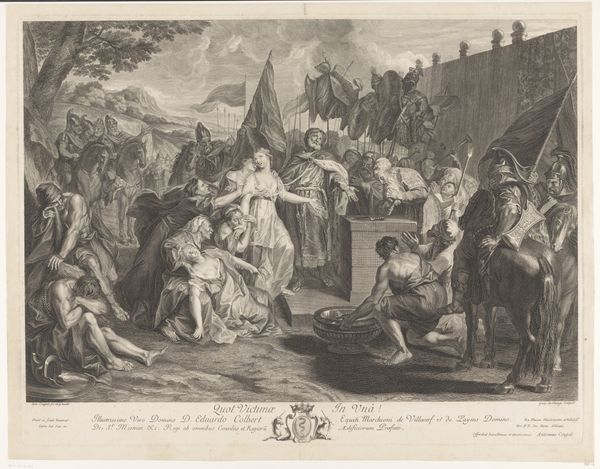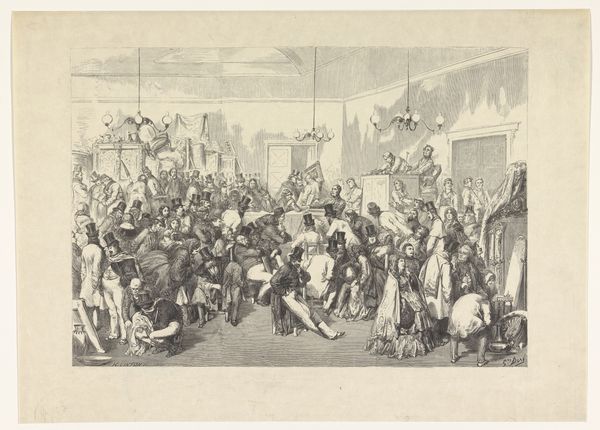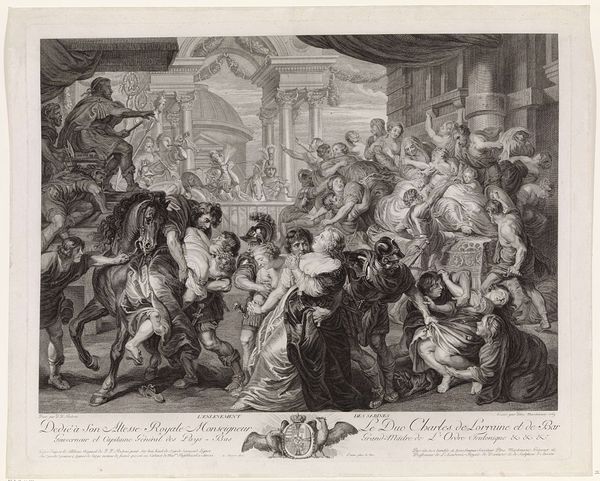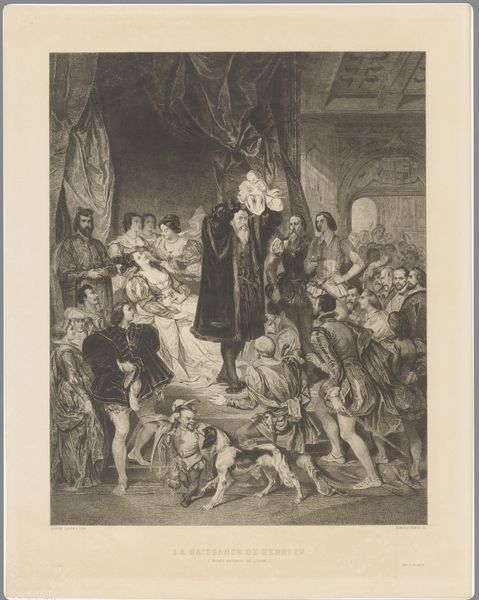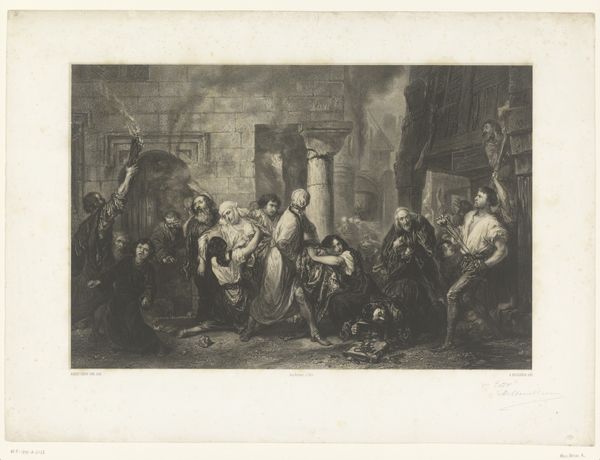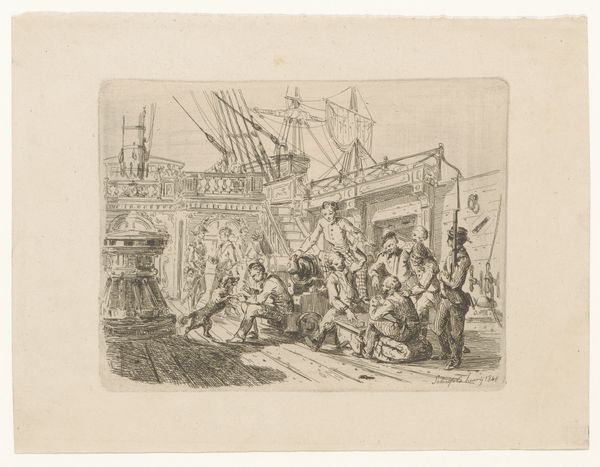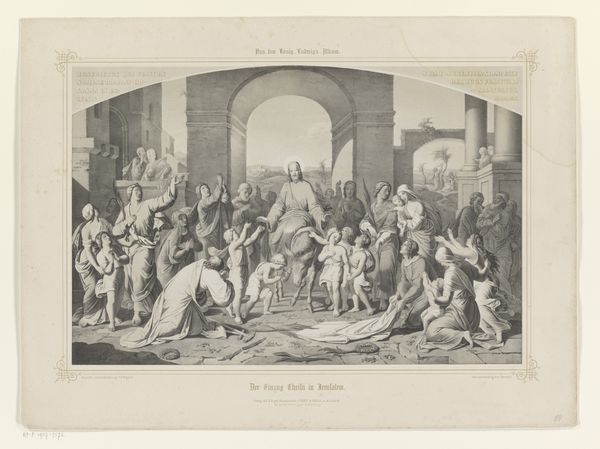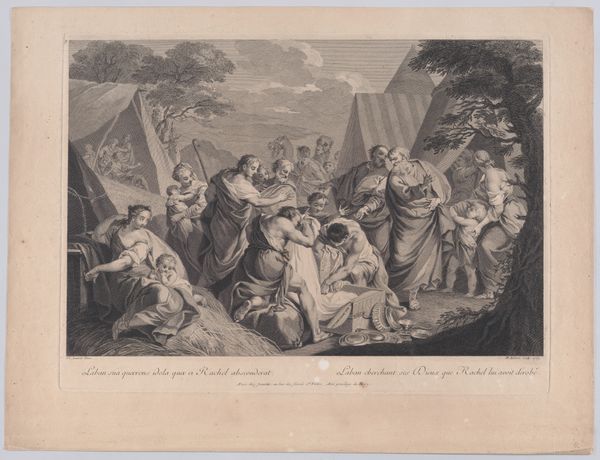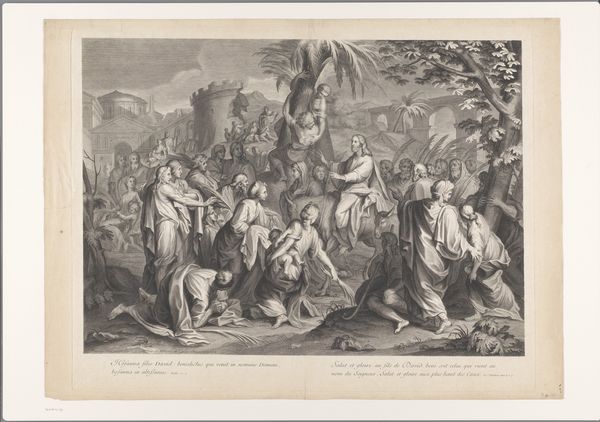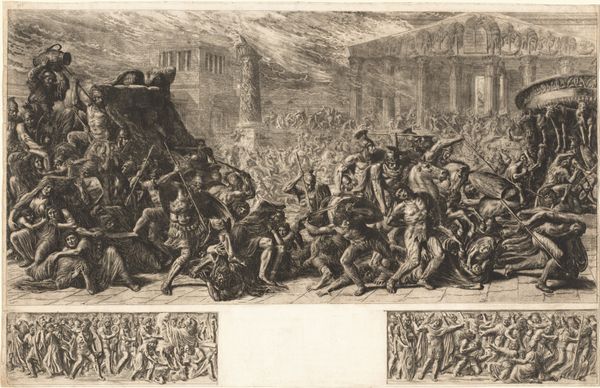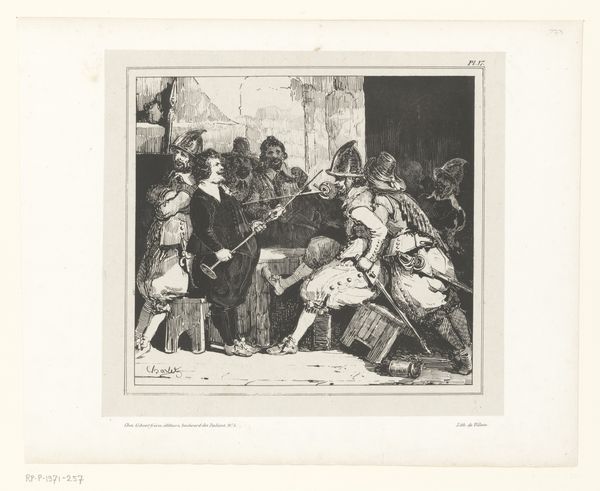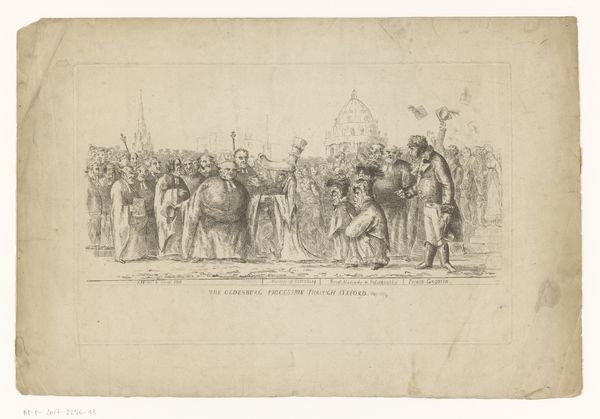
print, engraving
#
narrative-art
# print
#
old engraving style
#
19th century
#
history-painting
#
academic-art
#
engraving
#
realism
Dimensions: height 307 mm, width 488 mm
Copyright: Rijks Museum: Open Domain
Curator: The work we’re examining today is an engraving titled "Intocht van Karel V in Antwerpen, 1525", created between 1878 and 1882 by C.L. Duvivier and Soudet. It captures Charles V’s entrance into Antwerp. The style seems rooted in Academic Art traditions of that era. Editor: What strikes me immediately is the sheer density of figures and details! It’s a teeming, almost chaotic composition that makes it hard to focus on any single point. Curator: Indeed. Let's consider that this piece was produced in the late 19th century but depicts an event from the 16th century. Think about the power dynamics at play: Charles V, a Holy Roman Emperor, entering a city brimming with economic power at that time, and what his legacy then represented, and perhaps still does. How do you read that symbolism playing out formally in this piece? Editor: I’d say the printmaker uses linear perspective and carefully arranged crowds to direct our gaze to the mounted figure of Charles V. But beyond that focal point, the surface treatment tends towards an overall flattening. All those faces pressed together make it very difficult to isolate individuals or follow clear lines of action. It conveys the feeling of being caught up in the momentum of the crowd rather than witnessing it as a neutral observer. Curator: Precisely! The 'flattening,' as you say, and the print medium itself also contribute to the feeling of it all being stage-managed in a sense, a presentation rather than simply the depiction of an historical event. To fully decode its intended meaning we must look at both historical implications and presentation. For example, note who gets featured at the Emperor's side. This narrative underscores imperial legitimacy and civic endorsement of it. Consider how such scenes and the subsequent reproductions served the nationalistic interests of the period. Editor: Thinking about the contrasts between the detail in Charles’ attire and in the rendering of the masses is an interesting detail too. The printmaking highlights minute patterns, as though eager to preserve that richness visually for posterity. A detail only accessible for closer study due to its preservation within the engraving. Curator: Looking closely like this shows how visual culture became a vessel for negotiating national and imperial identities in a period marked by the emergence of historical awareness, burgeoning nationalism and modern print technologies. Editor: It all works together to elevate a single, pivotal figure amid the masses. An interesting effect indeed. Curator: And through all that we come closer to understanding its many historical layers.
Comments
No comments
Be the first to comment and join the conversation on the ultimate creative platform.
